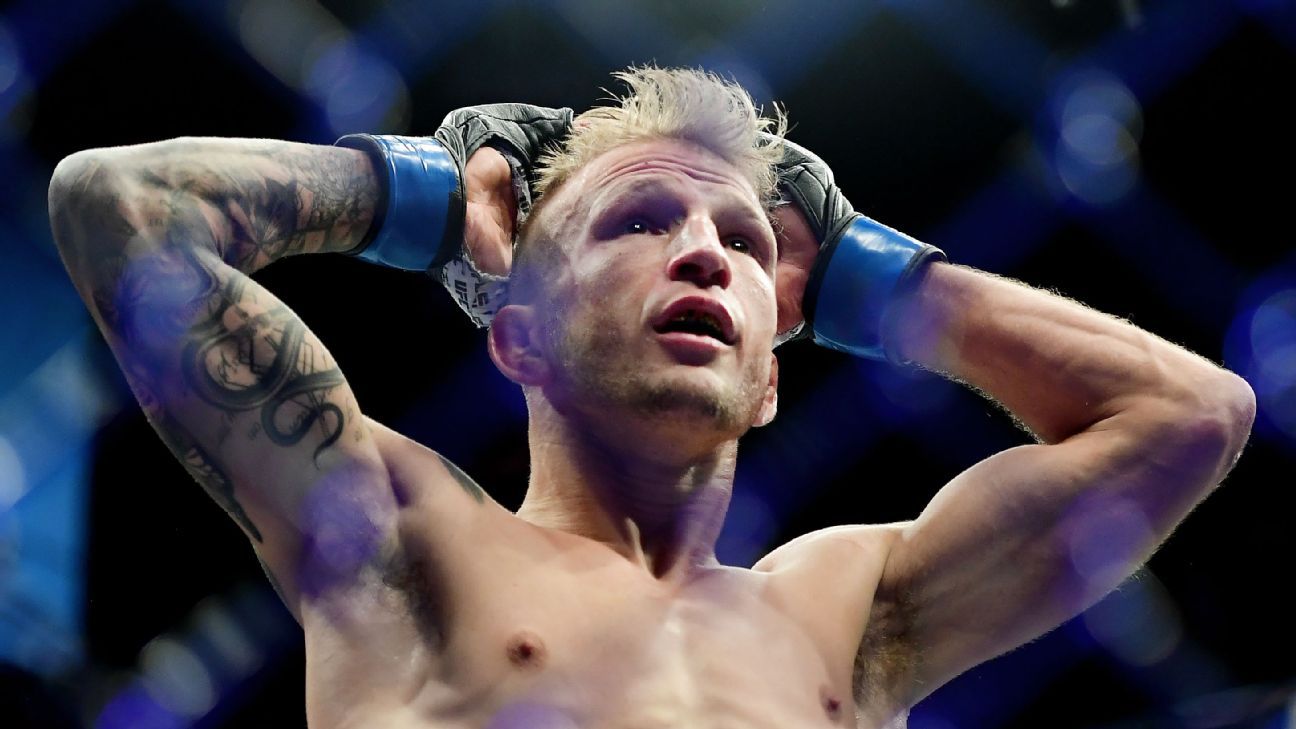Former UFC bantamweight champion TJ Dillashaw was suspended for two years by the U.S. Anti-Doping Agency on Tuesday for testing positive for recombinant human erythropoietin (EPO) before a flyweight title fight against Henry Cejudo on Jan. 19 in New York. The two-year suspension is the maximum sanction for a non-specified substance under the UFC’s anti-doping program. It is dated retroactively to Jan. 18, 2019, the day the test was submitted.
Dillashaw will be almost 35 when the suspension is completed.
“We all know the pressures to win at all levels of all sport are real and intense,” USADA CEO Travis T. Tygart said in a released statement. “It is exactly why strong anti-doping efforts are necessary to protect clean athletes’ rights, health and safety and to ensure that those who do succumb to these pressures and decide to break the rules will be held accountable in a real and meaningful way, as in this case.”
Here’s everything you need to know based off Tuesday’s announcement.
What did Dillashaw test positive for?
Dillashaw tested positive for recombinant human erythropoietin. According to the World Anti-Doping Agency, EPO is a peptide hormone used to stimulate red blood cell production that is typically administered via intravenous injection. An increase in red blood cells improves the amount of oxygen that the blood can carry to the body’s muscles, improving stamina and performance. It has been banned by WADA since the early 1990s.
“I’m quite familiar with EPO from my days investigating professional cycling teams,” UFC vice president of athlete health and performance Jeff Novitzky told ESPN. “It’s a very effective substance. It’s not a substance you find in contaminated supplements, it’s injectable only. You have to know what you’re doing when it enters your system.
“On a scale of seriousness in anti-doping, it’s up near the top.”
The test Dillashaw failed occurred on January 18, one day before his fight with flyweight champion Henry Cejudo, in which he lost via first-round TKO.
What does this mean for Dillashaw’s legacy?
Before Tuesday’s announcement, Dillashaw was in the discussion for the greatest UFC bantamweight ever. He claimed the UFC belt in May 2014 by defeating longtime champion Renan Barao via fifth-round TKO. Dillashaw then successfully defended it twice before losing to Dominick Cruz, but won four straight afterward and retook the title by beating Cody Garbrandt at UFC 227 last year.
But the news that he took EPO to enhance his performance in a fight will forever hurt his legacy. This is a substance that cannot enter one’s system via a contaminated supplement. Jon Jones, for instance, pleaded his innocence for that very reason. That is not the case with Dillashaw. He did not contest USADA’s decision and will be remembered for cheating.
How does this affect the bantamweight division?
With Dillashaw stripped of his belt, there is no current champion. This will change on June 8 in Chicago when Cejudo moves up a weight class and takes on longtime contender Marlon Moraes in the main event of UFC 238. The winner will win the title and with Dillashaw gone for two years, will be able to truly take ownership of the division. It won’t be a matter of the Moraes-Cejudo winner waiting for Dillashaw to come try to grab the belt back.
And for top 135-pounders like Pedro Munhoz and Aljamain Sterling, who are expected to meet at that same June 8 event for the No. 1 contender spot, they now can focus on just one target at the top of the mountain. Dillashaw is completely out of the picture for a long time.
How will the UFC handle losing a top star for two years?
Losing Dillashaw is a big loss. The UFC featured him on the first card of its ESPN deal for a reason. But while he is a star, he’s not a superstar. Right now that status is reserved for only Jones, Conor McGregor, Daniel Cormier and maybe Amanda Nunes. Ronda Rousey is long gone. Dillashaw is not in that top-tier category.
